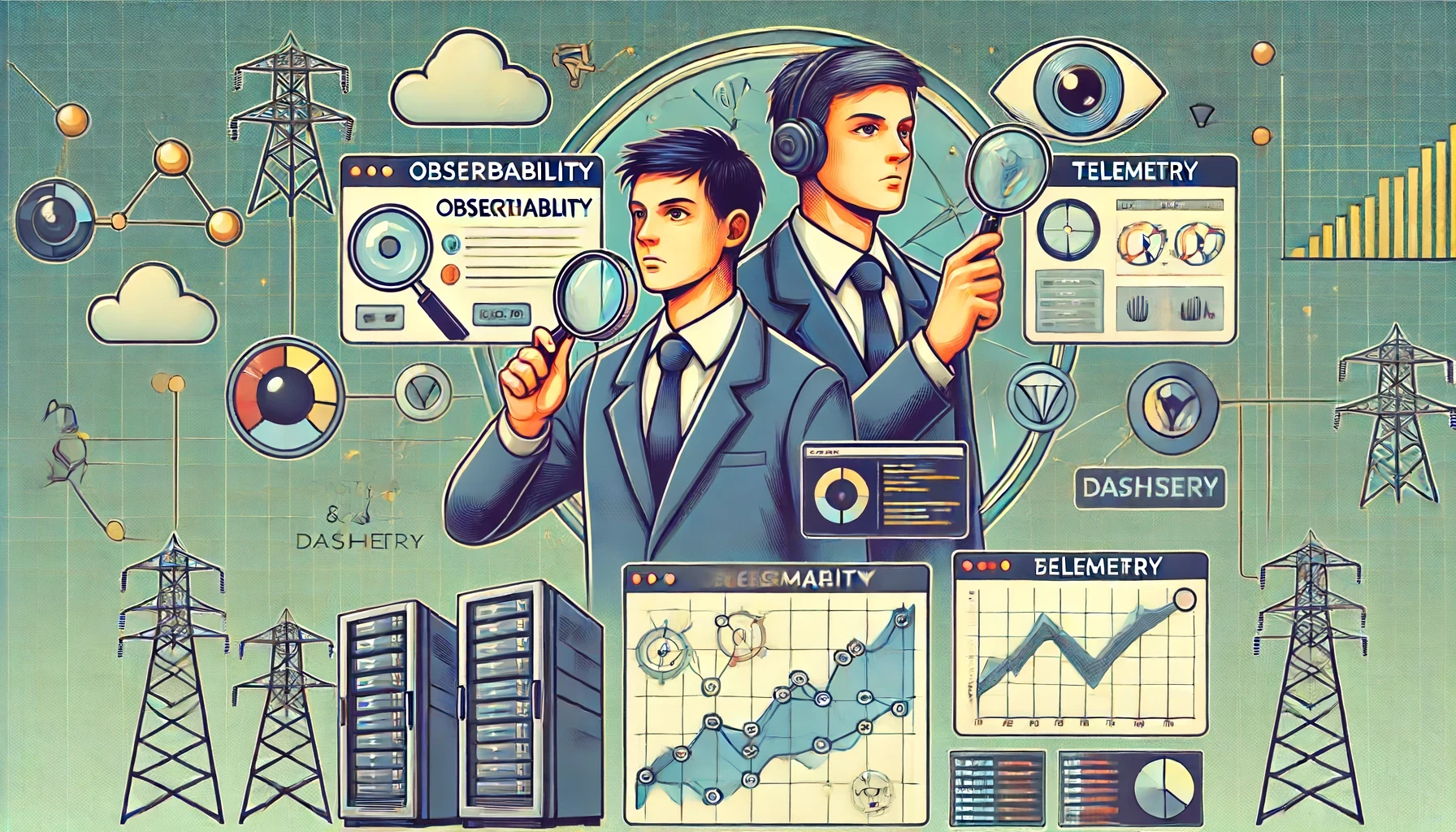Observability Vs Telemetry
Jun 15, 2024

In the world of IT and software development, the terms "observability" and "telemetry" are often used interchangeably, but they represent distinct concepts that are crucial for understanding and managing complex systems. In this article, we'll explore the differences between observability and telemetry, their importance, and how they work together to ensure the reliability and performance of your applications.
What is Observability?
Observability is a measure of how well you can understand the internal states of a system based on the data it produces. It’s a property of a system that enables you to infer its behavior by collecting and analyzing metrics, logs, and traces. Observability focuses on providing insights into the system's operations, making it possible to detect and diagnose issues quickly.
Key Components of Observability:
Metrics: Quantitative data that measures different aspects of system performance, such as CPU usage, memory consumption, and request rates.
Logs: Text records of events that occur within the system. Logs provide detailed information about system activities and errors.
Traces: Data that tracks the flow of requests through the system, showing how different components interact and where delays or failures occur.
Benefits of Observability:
Improved Debugging: Quickly identify and resolve issues by understanding the system's behavior.
Enhanced Performance: Optimize system performance by analyzing detailed data.
Proactive Monitoring: Anticipate and prevent issues before they impact users.
What is Telemetry?
Telemetry is the automated process of collecting data from various parts of a system and transmitting it to a central location for analysis. Telemetry provides the raw data needed for observability, including metrics, logs, and traces. It involves the instrumentation of systems to collect real-time data and send it to monitoring and analysis tools.
Key Components of Telemetry:
Instrumentation: Adding code or tools to the system to collect data.
Data Collection: Gathering metrics, logs, and traces from different parts of the system.
Data Transmission: Sending the collected data to a central monitoring and analysis platform.
Benefits of Telemetry:
Real-Time Data: Provides up-to-date information about the system’s state.
Automated Collection: Reduces the need for manual data gathering.
Foundation for Observability: Supplies the data necessary for comprehensive system analysis.
Observability Vs Telemetry: Key Differences
Purpose
Observability: Focuses on understanding and diagnosing system behavior.
Telemetry: Involves the collection and transmission of data.
Scope
Observability: Broader scope, encompassing the analysis and interpretation of data.
Telemetry: Narrower scope, primarily concerned with data collection and transmission.
Output
Observability: Provides insights and actionable information based on the collected data.
Telemetry: Generates raw data (metrics, logs, traces) for analysis.
Usage
Observability: Used by engineers and developers to monitor, debug, and optimize systems.
Telemetry: Used to feed data into observability tools and platforms.
How Observability and Telemetry Work Together
Telemetry and observability are complementary concepts that work together to provide a complete picture of system health and performance. Telemetry collects the necessary data, while observability analyzes and interprets that data to deliver actionable insights.
Data Collection: Telemetry gathers data from various sources within the system.
Data Transmission: The collected data is sent to observability tools.
Data Analysis: Observability tools process and analyze the data to generate insights.
Actionable Insights: Engineers use these insights to understand system behavior, detect issues, and make informed decisions.
Conclusion
Understanding the difference between observability and telemetry is essential for effectively managing and optimizing complex systems. While telemetry focuses on collecting and transmitting data, observability leverages that data to provide deep insights into system behavior. By combining these concepts, organizations can achieve better system reliability, performance, and user satisfaction.
For more detailed insights and tools related to observability and telemetry, consider exploring platforms like Dynatrace, New Relic, and Prometheus. These tools offer comprehensive solutions for collecting telemetry data and providing robust observability capabilities.
EzUptime is a simple yet efficient Uptime Monitoring service
Learn more
